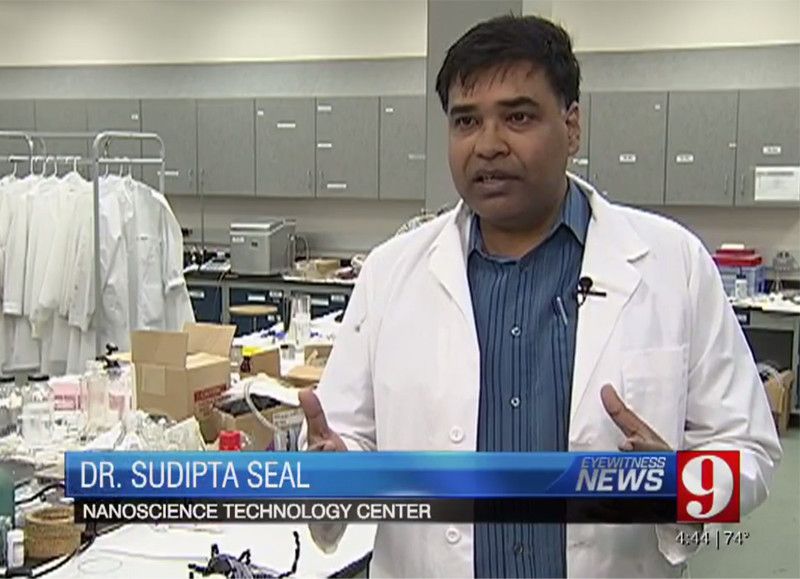 Sudipta Seal and his team’s nanotech, in collaboration with Bradley Willenberg from the UCF College of Medicine, was featured on WFTV9. The technology is designed to detect mosquito-borne diseases such as the Zika virus in real time.
Sudipta Seal and his team’s nanotech, in collaboration with Bradley Willenberg from the UCF College of Medicine, was featured on WFTV9. The technology is designed to detect mosquito-borne diseases such as the Zika virus in real time.
The technology starts with a trap that exudes an odorous blend that is especially attractive to specific species of disease-carrying mosquitoes. Once inside the trap, the mosquito will encounter a wick-based device Willenberg helped invent.
The wick would be soaked with a red-colored sugar water that mosquitoes love to consume. But the food also contains modified microscopic gold nanoparticles that will react to specific proteins found in a disease.
If the mosquito carries the disease, as it feeds, its enlarging belly would turn from red to blue. Mosquitoes that don’t carry the disease would stay red. Insecticide would also be in the solution and would kill the insects within a matter of minutes.
By looking in the trap, residents of at-risk areas would be able to see the color of the dead mosquitoes and know if their community has disease-carrying species – without having to send the dead insects to a lab for an analysis that could take as long as a week. The numbers of blue insects in the trap would indicate the seriousness of the infestation.
More Information
